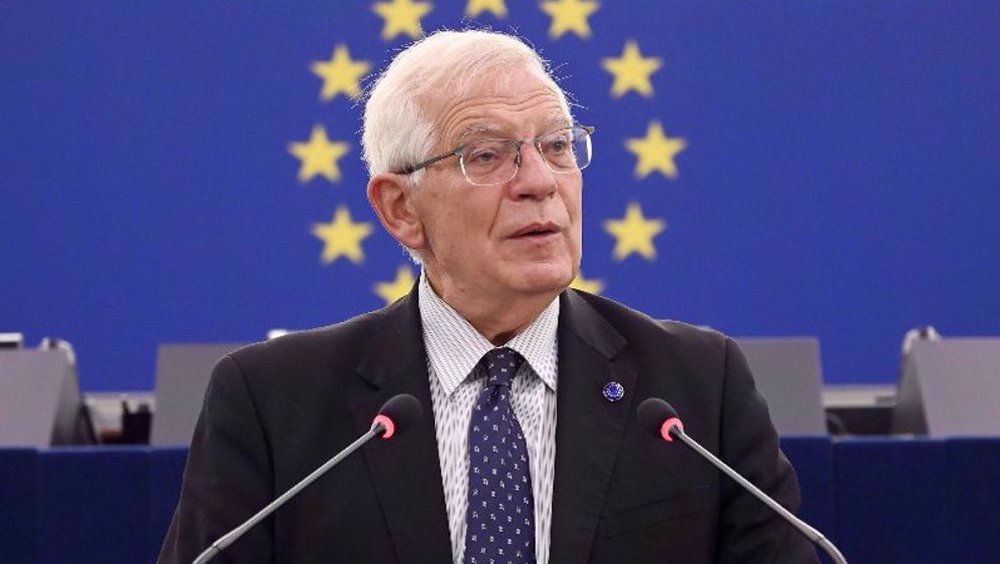Danish ship completes trial voyage through Russian Arctic
A Danish-flagged cargo ship has successfully passed through the Russian Arctic on a one-off trial journey as a result of melting sea ice, potentially opening a new trade route from Europe to East Asia.
Denmark's A.P. Moller-Maersk, the world’s biggest shipping group, announced on Friday that one of its cargo vessels – dubbed Venta Maersk – had arrived in Saint Petersburg after leaving Russia’s Pacific port city of Vladivostok on August 22.
The shipping company said the Venta Maersk, which had a cargo of Russian frozen fish and South Korean electronics, was trialing a “shortcut” trade route through the Arctic as global warming thaws open the infamous Northeast Passage.
“The trial allowed us to gain exceptional operational experience, test vessel systems, crew capabilities and the functionality of the shore based support setup,” said Palle Laursen, Maersk’s chief technical officer.
Laursen added that the Venta Maersk and all systems aboard had performed well in the unfamiliar environment.

The new route, as industry experts say, could reduce the travel distance from East Asia to Europe from the 21,000 kilometers it takes to go via the Suez Canal to 12,800 kilometers. That would cut transit time by 10-15 days.
The Northern Sea Route could be a shorter route for journeys from East Asia to Europe than the Northwest Passage over Canada because it will likely be free of ice sooner due to climate change, according to experts.

The Arctic route is laced with thick sea ice even in the summer months, making it a treacherous place to sail. Even the largest of container ships need a reinforced hull to break through the region’s ice and most of them must be escorted by specialized ice-breaker vessels.
But as a result of rising temperatures and melting ice it is becoming more and more accessible for increasingly longer periods.
Russian energy expert Ruslan Tankayev believes the Northern Sea Route could be passable all year round by 2050.
“Currently, we do not see the Northern Sea Route as a viable commercial alternative to existing east-west routes,” Laursen said.
“Today, the passage is only feasible for around three months a year which may change with time. Furthermore, we also must consider that ice-classed vessels are required to make the passage, which means an additional investment.”
According to Tankayev, global warming is a "terrible evil” for countries such as Africa and Latin America, but it could provide opportunities for Russia and Canada.
The route is not only several thousand kilometers shorter than passing through the Suez Canal but also much safer with virtually no piracy risks.
With more than half of all Arctic coastline along its northern shores, Russia says as much as $35 trillion worth of untapped oil and natural gas could be lurking.
Now China is pushing its way into the Arctic, announcing early this year its ambitions to develop a "Polar Silk Road" through the region.
Finland, the United States and Canada have also proposed significant infrastructure investment within their respective Arctic zones.
On Thursday, the Russian military deployed anti-ship missiles in the Arctic, in a sign that if necessary, the nuclear power intends to protect its claims in the resource-rich region by force.
Scores killed as Takfiri terrorists target Shia Muslims in Pakistan
Pezeshkian to US, Europeans: You are killing women, children
VIDEO | COP29: another climate failure?
ICC issues arrest warrants for Netanyahu, Gallant for war crimes
Israeli strikes kill 88 Palestinians in northern Gaza
American voters plainly rejected complicity in Gaza genocide: Iran FM spox
ICC should issue more arrest warrants for Israeli authorities over Gaza genocide: UN expert
Israel using AI weapons co-produced by India in Gaza genocide: Report










 This makes it easy to access the Press TV website
This makes it easy to access the Press TV website